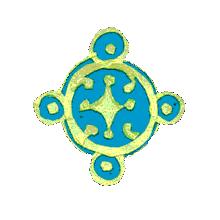THE NATURE OF ORDER
|
The capacity to generate life in a neighborhood, comes from issues that are discussed in the four volumes of The Nature of Order. We strongly suggest that you make yourself familiar with the materials in these books, in order to get a solid foundation for the use of generative code, and for the ability to make buildings which please people. |
BOOK 1: THE PHENOMENON OF LIFE
|
GEOMETRY. This book sets out the geometric structure of wholeness in the physical world. It shows what physical qualities things -- buildings, streets, gardens -- need in order to interact successfully with one another, and in order to form successful wholes. |
BOOK 2: THE PROCESS OF CREATING LIFE
|
UNFOLDING. This book sets out an outline theory of unfolding: the necessary processes which allow living geometry to be formed. It defines the background of the processes needed to make healthy buildings, outdoor space, and neighborhoods. |
BOOK 3: A VISION OF A LIVING WORLD
|
PHYSICAL AND ARCHITECTURAL EXAMPLES. This book sets out examples at almost every scale, of actual cases where one can trace the use of living processes, first implemented, and then leading to buildings and neighborhoods which are whole, and habitable. |
BOOK 4: THE LUMINOUS GROUND
|
HUMAN AND EMOTIONAL UNDERPINNING. This book describes the deep structure in things and processes, which is responsible for the human connection to the world that successful, living neighborhoods have. It describes the origin of the spiritual dimension in our built neighborhoods. |
BOOKSHOP
|
To buy any of the four books, visit our online bookstore. . Discounts are available. A Vision of a Living World is possibly the best starting point for practical work in building successful neighborhoods. The Nature of Order provides much of the intellectual background for this website. Published by Center of Environmental Structure Publishing, Berkeley, California, four volumes, 2001 to 2005.
|
|
|
STRESS IN THE ENVIRONMENT |
Martin Luther King on Stress
|
|
|
THEORY: EXTENSION OF CONCEPTS FROM The Nature of Order |
Harmony-Seeking Computations
New Concepts in Complexity Theory Annotated Guide to The Nature of Order This paper (not yet available) gives a detailed annotated listing of case-studies, discussions of implementation, and examples of neighborhood building, in the four books of The Nature of Order. They will help you to understand how the implementation process works. |
|
